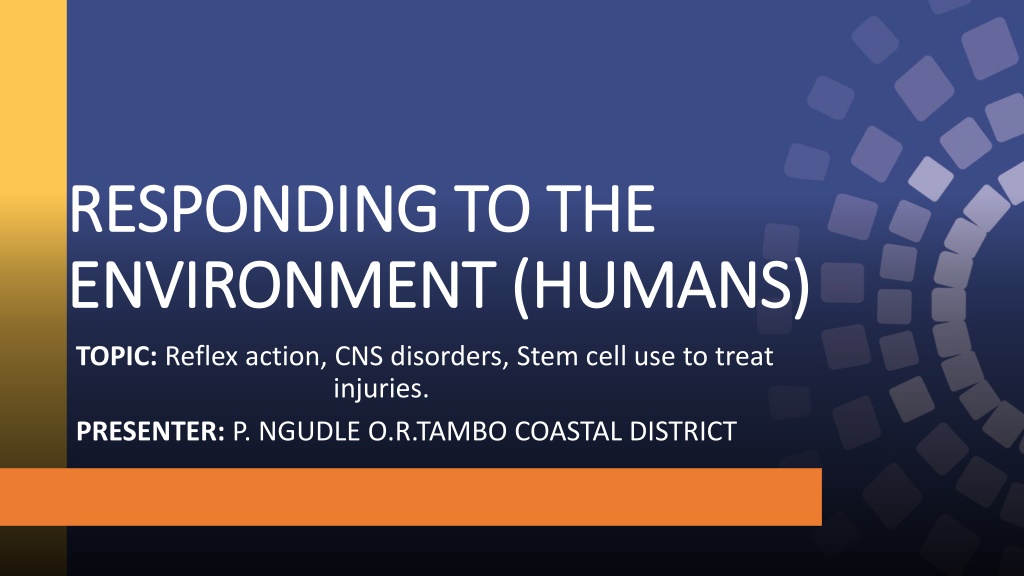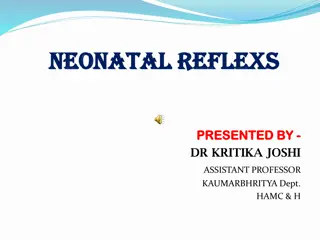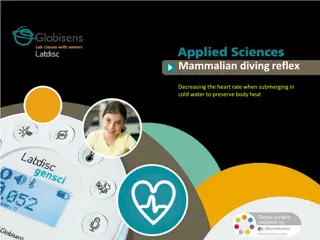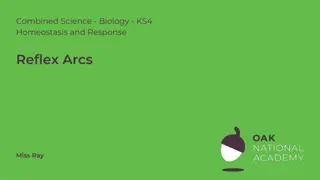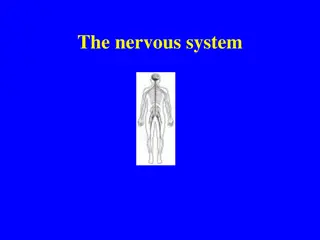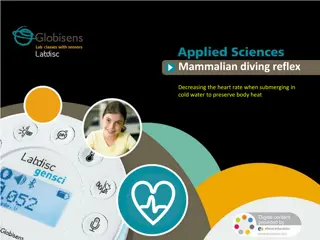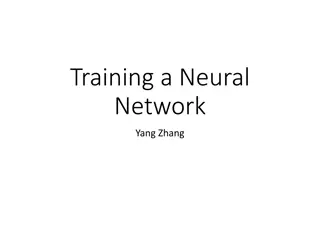Understanding Reflex Actions and Neural Pathways in Human Physiology
Explore the intricate mechanisms of reflex actions, CNS disorders, and the potential of stem cell therapy in treating injuries. Learn about reflex arcs, biological terms, and the significance of synapses in neural communication. Dive into the functioning of a simple reflex action and understand how the body's automatic responses protect from harm efficiently.
Download Presentation

Please find below an Image/Link to download the presentation.
The content on the website is provided AS IS for your information and personal use only. It may not be sold, licensed, or shared on other websites without obtaining consent from the author. Download presentation by click this link. If you encounter any issues during the download, it is possible that the publisher has removed the file from their server.
E N D
Presentation Transcript
RESPONDING TO THE RESPONDING TO THE ENVIRONMENT (HUMANS) ENVIRONMENT (HUMANS) TOPIC: Reflex action, CNS disorders, Stem cell use to treat injuries. PRESENTER: P. NGUDLE O.R.TAMBO COASTAL DISTRICT
EXAMINATION EXAMINATION GUIDELINES GUIDELINES
Biological terms for Biological terms for this topic: this topic: Reflex action. Reflex arc. Receptor. Effector. Synapse. Motor neuron. Sensory neuron. Connector neuron. Impulse. Stimulus. Central Nervous System.
Reflex action : a rapid automatic response to a stimulus. Reflex arc : Is the path taken by an impulse in bringing about a response to a during a reflex action. OR : Is the path taken by an impulse from the receptors to the effectors.
Structure of the Reflex arc and functions Structure of the Reflex arc and functions of various part associated with it. of various part associated with it.
Functioning of a simple reflex action: Functioning of a simple reflex action: using an example. using an example. Heat receptors in the skin of your fingers receive the heat stimulus and convert it to a nerve impulse. The sensory neuron conducts the nerve impulse through the dorsal root of the spinal nerve into the spinal cord. In the spinal cord the sensory neuron makes synaptic contact with a connector neuron which makes synaptic contact with a motor neuron. The impulse is conducted by the motor neuron out of the spinal cord towards the muscles of your hand which act on effectors. The muscles contract to pull your hand away from the hot surface.
It is fast because the nerve impulse does not have to travel to the brain for interpretation. The connector neuron makes a short cut possible. Reflex arc protects the body from harm because part of the body that is affected is removed more quickly from what is injuring it. Significance of a Reflex action
Significance of a synapses Significance of a synapses Synapses are microscopic gaps between neurons. In the synapses there are chemicals called neurotransmitters Neurotransmitters released to allow an impulse to pass from one neuron to another. Synapses act as valves that ensure that impulses can move in one direction only.
ALZHEIMERS ALZHEIMER S DISEASE DISEASE A degenerative disease of the brain which causes the loss of memory and thinking skills. Occurs when the tissue within the brain wastes away usually in older persons. People with Alzheimer s disease show symptoms of memory loss and changing in their thinking skills(Confusion). Picture of Alzheimer's Disease
Multiple Sclerosis Multiple Sclerosis Occurs when the body s immune system attacks and destroys the myelin sheath. Affected persons show physical and mental disabilities.
Stem cell use in Treating Spinal Injuries Stem cells are undifferentiated cells that have a potential to differentiate to form any tissue or organ in the body. Sources Embryonic stem cells- are taken from the blastocysts, 4 to 5 day old human embryos which are then destroyed in the process. Adult stem cells- are taken from the one of the body tissues. Stem cells from the cord blood- are taken from the blood of the umbilical cord and placenta
Uses of Stem Cells Uses of Stem Cells Used to treat diseases in couple that cannot have children. Generate new cells to replace damaged or diseased tissues or organs.
ACTIVITY 1: The diagram below represents a pathway making possible a process occurring in humans. Study the diagram and answer the questions:
1 Which process is made possible by the pathway shown in the diagram? Identify the LETTER that represents the a) Stimulus b) effector Give the name of the microscopic gap represented by the part labelled D. Damage to which neuron (B, C or E) will cause the I. Inability to respond. II. Loss of sensation. III. Loss of both sensation and ability to respond. (1) 2 (1) (1) (1) 3 4 (1) (1) (1) [7]
